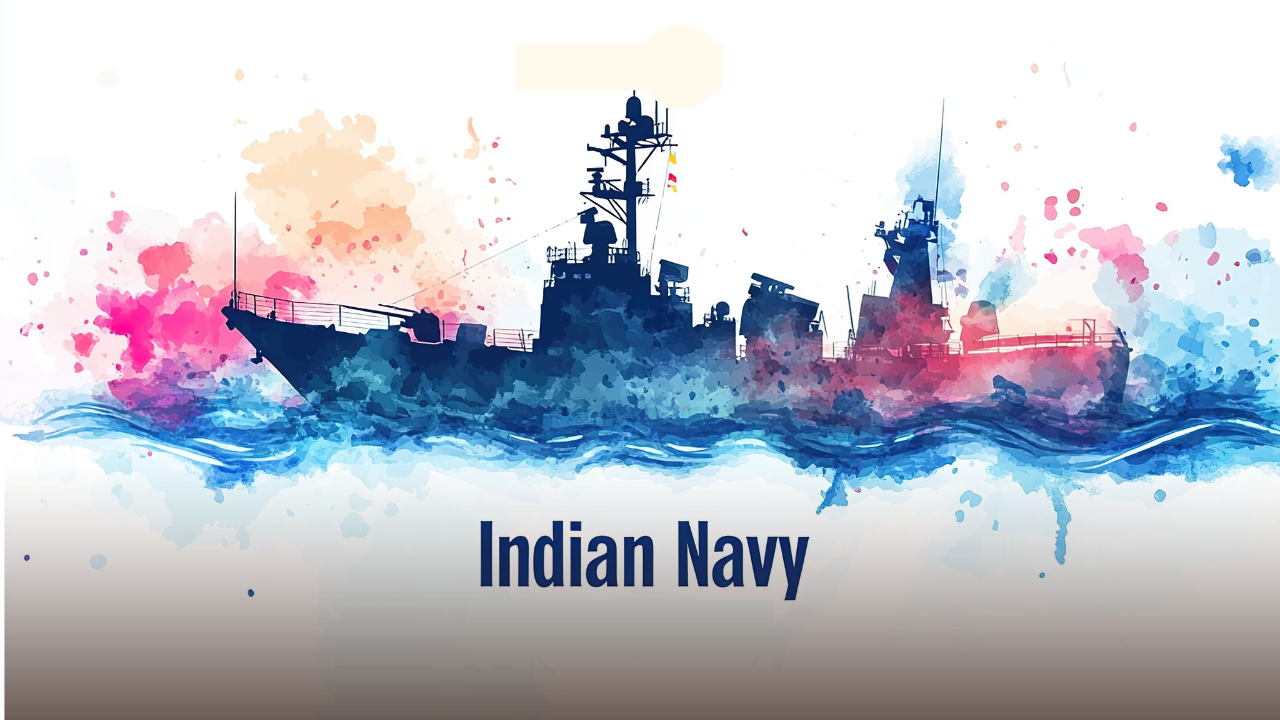Sailing Towards Strength: How Indian Navy Secures Its Place in a Changing World
Introduction – Sailing Towards Strength
On January 15, 2025, the Indian Navy achieved a remarkable feat by commissioning three cutting-edge combat vessels: INS Nilgiri, INS Surat, and INS Vaghsheer. This event, the first of its kind, signifies India’s growing naval strength and its pursuit of self-reliance in defence production. Each vessel symbolises a leap forward in technology, design, and functionality, enhancing India’s ability to defend its interests in a region as vast and important as the Indo-Pacific. Beyond strengthening maritime capabilities, these inductions reflect India’s strategic vision to maintain a strong presence in an ever-changing world order. As nations jostle for influence in the Indo-Pacific, the Indian Navy stands as a cornerstone of India’s foreign policy, safeguarding its waters and projecting its power.
INS Nilgiri: A Guardian of the Seas
INS Nilgiri, the first of the Project 17A stealth frigates, exemplifies India’s ability to construct highly advanced warships. Built under an “integrated construction” method, it demonstrates efficiency in shipbuilding, where pre-assembled modules reduce time and cost. This innovation points to India’s growing confidence in its indigenous capabilities.
With weapons like supersonic surface-to-surface missiles and Medium Range Surface-to-Air Missiles (MRSAM), INS Nilgiri is equipped to handle various threats. Its stealth features allow it to avoid enemy detection while patrolling vast ocean areas, ensuring safety along vital trade routes.
From a broader perspective, INS Nilgiri embodies the growing importance of protecting the Indian Ocean Region (IOR), where India seeks to prevent threats from piracy, terrorism, and foreign naval influence. By securing its sea lanes, India strengthens its trade and energy security, both vital for a growing economy.
INS Surat: Technology Meets Strength
As the first AI-enabled warship in the Indian Navy, INS Surat highlights the role of technology in modern warfare. AI enhances decision-making, allowing the ship to operate efficiently in high-pressure scenarios. It is part of Project 15B, a series of destroyers aimed at boosting India’s maritime firepower.
With its speed, advanced radar systems, and a powerful arsenal of missiles and torpedoes, INS Surat is designed for offensive and defensive operations. Its ability to perform “network-centric warfare” connects it with other naval platforms, making operations more coordinated and impactful.
Strategically, the inclusion of such a destroyer boosts India’s Indo-Pacific policy. With growing concerns about China’s assertive actions in the South China Sea and its increasing influence in the Indian Ocean, INS Surat serves as a deterrent and a signal of India’s resolve to maintain stability in the region.
INS Vaghsheer: The Silent Sentinel
INS Vaghsheer, a diesel-electric submarine, adds stealth to India’s maritime arsenal. As the final vessel in the Kalvari-class under Project 75, its design is based on the French Scorpene class, tailored for India’s specific needs.
The submarine is equipped for a range of missions, from anti-ship warfare to intelligence gathering. Its modular design allows for future upgrades, such as Air Independent Propulsion (AIP) technology, which will significantly increase its underwater endurance. This feature is especially important in contested waters, where staying undetected can determine the outcome of an operation.
India’s growing submarine fleet is crucial in countering underwater threats from rival nations. As more countries, including China, expand their naval capabilities, INS Vaghsheer strengthens India’s position as a dominant force in the Indian Ocean and a reliable partner in regional security.
India’s Role in the Indo-Pacific
The Indo-Pacific has become the focal point of global politics, with many nations vying for influence over its strategic waterways. This region is home to some of the world’s busiest sea routes, carrying goods, energy, and resources that power economies.
For India, the Indo-Pacific policy, often referred to as the “Act East” policy, underscores the importance of engaging with countries in Southeast Asia and beyond. By commissioning advanced vessels like INS Nilgiri, INS Surat, and INS Vaghsheer, India signals its intent to play a leading role in maintaining freedom of navigation and upholding international laws in these waters.
Additionally, India’s cooperation with allies like the United States, Japan, and Australia through the Quad alliance is complemented by a stronger navy. These vessels allow India to contribute more effectively to joint exercises, humanitarian missions, and disaster relief operations.
A Shift in the World Order
The world is undergoing significant changes, with traditional powers like the United States now sharing influence with rising nations such as China and India. In this shifting global order, naval strength has become a critical aspect of power, as it allows countries to safeguard their interests and ensure stability in strategically important regions. Maritime power is especially vital for protecting sea routes that facilitate global trade and supply essential resources.
India’s naval modernisation plays a crucial role in addressing the challenges of this multipolar world. By commissioning advanced ships and submarines, India enhances its ability to counter potential threats and maintain security in its maritime zones. The Indian Ocean, a region of immense strategic importance, is central to these efforts. Controlling key chokepoints like the Malacca Strait and Gulf of Aden ensures not only the safety of vital trade routes but also strengthens India’s economic stability and regional dominance. A strong navy thus secures India’s role in the evolving global order.
Economic and Technological Benefits
The commissioning of these vessels is not just about defence—it reflects the success of India’s Make in India initiative. By building these ships domestically, India reduces its dependence on foreign suppliers, fosters innovation, and creates jobs.
Projects like INS Nilgiri’s construction at Mazagon Dock Shipbuilders and INS Surat’s design by the Warship Design Bureau show how India’s shipyards and research teams are rising to global standards. The technological advancements in AI and stealth systems developed for these vessels have applications that extend beyond the military, contributing to India’s broader technological growth.
Challenges and Future Directions
While these inductions are a major achievement, challenges remain. Building advanced warships requires significant investment, skilled manpower, and long-term planning. India must ensure that its defence budget supports the continued modernisation of its navy.
Moreover, the integration of new technologies, such as autonomous drones and cyber-defence systems, will be essential as naval warfare evolves. Developing more submarines, aircraft carriers, and advanced surveillance systems will further strengthen India’s position.
Conclusion
The commissioning of INS Nilgiri, INS Surat, and INS Vaghsheer is a defining moment in India’s naval history. These vessels not only enhance the country’s ability to secure its waters but also represent a larger vision of self-reliance and strategic influence.
As the Indo-Pacific grows in importance, India’s modernised navy ensures that it remains a key player in shaping the region’s future. Through these advancements, India sends a clear message: it is ready to safeguard its interests, support its allies, and contribute to global peace and security. The rising tides of India’s naval strength reflect its journey towards becoming a maritime powerhouse, steering confidently into the challenges and opportunities of a changing world.
Subscribe to our Youtube Channel for more Valuable Content – TheStudyias
Download the App to Subscribe to our Courses – Thestudyias
The Source’s Authority and Ownership of the Article is Claimed By THE STUDY IAS BY MANIKANT SINGH




